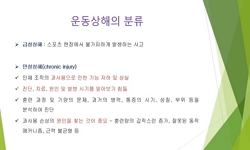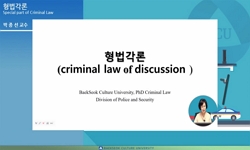이 글은 경북 선산의 양반 출신인 김정묵(1888~1944)이 1911년 중국으로 망명하여 사망한 1944년까지 중국의 상해와 북경, 만주 등지에서 전개한 독립운동에 대하여 살펴본 글이다. 이 글을 쓰기 ...
http://chineseinput.net/에서 pinyin(병음)방식으로 중국어를 변환할 수 있습니다.
변환된 중국어를 복사하여 사용하시면 됩니다.
- 中文 을 입력하시려면 zhongwen을 입력하시고 space를누르시면됩니다.
- 北京 을 입력하시려면 beijing을 입력하시고 space를 누르시면 됩니다.
https://www.riss.kr/link?id=A106635857
- 저자
- 발행기관
- 학술지명
- 권호사항
-
발행연도
2020
-
작성언어
-
-
주제어
김정묵 ; 대한민국 임시정부 ; 대한민국 임시의정원 ; 상해 ; 북경 ; 군사통일회 ; 대독립당조직북경촉성회 ; 의열단 ; 김원봉 ; 조선혁명군사정치간부학교 ; Kim Jung-mook ; Provisional Government of the Republic of Korea ; Provisional Assembly of the Republic of Korea ; Shanghai ; Beijing ; Military Unification Association ; Grand Independent Party Organization Beiging Promotion Association ; Eui-yeol-dan ; Kim Won-bong ; Chosun Revolutionary Military and Political Interdisciplinary School
-
등재정보
KCI등재
-
자료형태
학술저널
- 발행기관 URL
-
수록면
115-148(34쪽)
- DOI식별코드
- 제공처
-
0
상세조회 -
0
다운로드
부가정보
국문 초록 (Abstract)
이 글은 경북 선산의 양반 출신인 김정묵(1888~1944)이 1911년 중국으로 망명하여 사망한 1944년까지 중국의 상해와 북경, 만주 등지에서 전개한 독립운동에 대하여 살펴본 글이다. 이 글을 쓰기 위하여, 일제의 정보문서, 신문, 독립운동가의 일기와 증언, 『대한민국임시정부자료집』 등을 활용하였다.
김정희는 1911년 장인의 동문인 한계 이승희가 있는 중국 밀산 한흥동에 가서 독립운동기지를 건설하는 활동을 전개하였다. 그리고 1914년 한계 이승희가 공교회운동을 하기 위해 북경에 이동한 것에 맞추어 북경에 유학하였다. 그는 1914년 북경법정전문학교 법률과에 입학하여 4년간 근대적인 학문을 수학하였다.
1918년 제1차 세계대전의 종전에 즈음하여, 만주와 연해주에서 독립운동을 전개한 그는 1919년 4월 경 상해에서 대한민국 임시정부가 수립되자, 이에 참여하였다. 그는 임시의정원 경상도 의원으로 제도를 정비하고, 각종의 정책을 결정하고, 독립운동자금을 마련하기 위한 방책을 마련하였다. 그리고 그는 임시의정원 의원으로서 1919년 9월 대한민국 임시정부와 한성정부와 대한국민의회의 통합에 기여하였다.
그러나 그는 통합 후 대한민국 임시정부와 임시의정원의 운영에 불만을 품고 임시의정원 의원을 사직하였다. 그리고 그는 북경으로 가서 신채호 등과 무장투쟁세력의 통일과 이를 통한 독립운동을 전개하려 하였다. 다만 그는 소비에트 러시아의 지원에 의해 군대를 양성하려는 박용만과 신숙 주도의 군사통일회의에 참여하지 않고, 김좌진 등과 연계하여 중국의 지원에 의한 군사단체의 통일을 이루려고 하였다.
1920년대 중반 소·일협약과 三矢協定에 의해 일본과 소련, 일본과 봉천군벌과의 화해 분위기기 형성되고 중국과 연해주에서의 독립운동이 난관에 봉착하고, 또 국내에서도 타협적 독립운동인 자치운동이 전개되자, 그는 투쟁적 독립운동노선을 견지시키기 위한 활동을 전개하였다. 그는 1925~26년 의열단과 연계하여 김창숙의 제2차 유림단의거를 지원하였고, 1926년 대독립당조직북경촉성회에 참여하였다.
한편 그는 1926년 11월 경 북경에서 入籍墾民會를 발기하고 만주지역 한인의 입적을 도와 이들의 권익을 옹호하기 위한 활동을 전개하였다. 아울러 만주지역의 한인을 괴롭히는 마적과 관계를 개선하고, 반한인감정을 갖고 있던 중국인들의 태도를 개선시키기 위한 활동을 전개하였다.
1931년 만주사변이 발생한 후 그는 만주에서 북경으로 이동하여 1932~33년 경 김원봉과 항일구국회 활동을 벌였고, 열하에 중한항일전을 전개하기 위한 한인의용군 사령부를 조직하려고 하였다. 한편 그는 1932년 8월 이후 군사위원회 북평분회 법무관이 된 것을 활용하여, 중국 국민당의 간부 및 군사위원들과 접촉하여 조선혁명군사정치간부학교와 낙양군관학교의 개설과 학생의 모집, 운영 등을 후원하였다.
양반으로서 고등교육을 받아 유복하게 살 수 있었지만 그는 독립운동이라는 험한 길을 걸었다. 그의 인생은 ‘노블리스 오블리제’를 실천한 선각적 독립운동가의 모습이었다.
다국어 초록 (Multilingual Abstract)
The topic of this article is Kim Jung-mook(1888-1944) who was a patriot born in Sunsan, Gyeongsangbookdo Province. I reviewed his activities in Shanghai, Beijing, Manchuria and elsewhere in China, from 1911 until 1944. To do this research, I made use ...
The topic of this article is Kim Jung-mook(1888-1944) who was a patriot born in Sunsan, Gyeongsangbookdo Province. I reviewed his activities in Shanghai, Beijing, Manchuria and elsewhere in China, from 1911 until 1944. To do this research, I made use of information documents of Japan government, newspapers, testimony from independence activists, and ect.
In 1911, Kim Jeong-mook went to Hanheung-dong in Milsan, China, where with his father-in-law's alumni, Lee Seung-hui, he made an efforts to build an independence movement foundation. IN 1914, he went to Beijing and entered into Peking Law School, and studied modern laws for four years.
Around the end of World War I in 1918, he did independence movement in Manchuria and Primorsky of Russia. And immediately after the establishing of the Provisional Government of Shanghai around April 1919, he went to Shanghai and become a member of the National Assembly. He decided on various policies, and prepared measures to raise funds for the independence movement. And when the Provisional Government of the Republic of Korea and the Hansung Government and the Korean National Assembly were merged in 1919, he supported the integration of the Provisional Government of the Republic of Korea in Shanghai and the Provisional Legislative Council of the Republic of Korea.
However, he resigned from the interim parliament in 1920 after learning that Lee Seung-man had insisted on mandatory rule. Then he went to Beijing to organize a military unification promotion association with Shin Chae-ho and Park Yong-man and called for the unification of armed struggle forces. However, he did not participate in the military unification conference led by Park Yong-man and Shin Sook, which was to train troops by the support of Soviet Russia, but tried to achieve the unification of military groups supported by China in conjunction with Kim Jwa-jin.
In the mid-1920s, when the independence movement in China and the Maritime Provinces faced difficulties, and the autonomous movement, which was a compromise, was developed at home, he proceeded to maintain the militant independence movement line. He supported Kim Chang-sook’s second Yurimdan struggle in 1925-26, and participated in the Great Independent Party Organization Beijing Promotion Conference in 1926.
Meanwhile, he launched the Civil Society in Beijing around November 1926 and helped Korean residents in Manchuria to defend their rights and interests. In addition, activities were carried out to improve the stable relationship and the attitude of the Chinese who had anti-Korean sentiment in Manchuria.
After the Manchurian Incident occurred in 1931, he moved from Manchuria to Beijing to engage in anti-Japanese activities. There around 1932-33, he tried to organize a Korean-Chinese military headquarters to stage a War against Japan. Meanwhile, using his status as a lawyer for the Military Commission's North Pyeongbun Division since August 1932, he contacted senior officials and military members of the People's Party of China to sponsor the opening of the Chosun Revolution Military Political Officer School and Nakyang Military Academy, recruiting and operating students. As a nobleman, he was able to live comfortably with a higher education, but he walked on the rough road of independence movement. His life was one of a visionary independence activist who practiced Noblesse Oblige.
동일학술지(권/호) 다른 논문
-
『일본서기(日本書紀)』와 <일본기(日本紀)> 명칭에 관한 소고(小考)
- 대구사학회
- 이재석 ( Lee Jae-seok )
- 2020
- KCI등재
-
당대(唐代) 보고제도(保辜制度)의 규정(規定)과 적용사례(適用事例)에 대한 일고찰(一考察)
- 대구사학회
- 박서진 ( Park Seo-jin )
- 2020
- KCI등재
-
제2차 만주 폐페스트의 유행(1920-21)과 방역정책의 전환: 하얼빈 도시공간의 재편과 관련하여
- 대구사학회
- 신규환 ( Sihn Kyu-hwan )
- 2020
- KCI등재
-
전후 독일의 미국연구: 베를린의 <존 F. 케네디연구소(John F. Kennedy Institute)>를 중심으로
- 대구사학회
- 박용희 ( Park Yong-hee )
- 2020
- KCI등재






 KCI
KCI KISS
KISS






